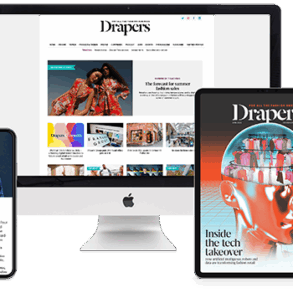Tapestry, Inc. made headlines on August 10 when it announced that it had entered into a definitive agreement to acquire Capri Holdings in a deal with a total enterprise value of approximately $8.5 billion. In a statement, New York-headquartered Tapestry said the acquisition “brings together six highly complementary brands” – Capri’s Versace, Jimmy Choo, and Michael Kors brands, and its own properties, Coach, Kate Spade, and Stuart Weitzman – “with global reach, powered by Tapestry’s data-rich customer engagement platform and diversified, direct-to-consumer operating model.” The result: A group whose brands generated global annual sales in excess of $12 billion – and nearly $2 billion in adjusted operating profit – during the 2022 fiscal year and that boast a presence in over 75 countries.
The deal, which still needs to secure regulatory approval before it can be finalized, is noteworthy as it is a clear indication that consolidation is still king in the luxury – and accessible luxury – segments of the market. More than that, though, the prospective American “mega-merger” is being characterized as the closest thing to a stateside luxury goods giant to take on European behemoths like LVMH, Kering, and Richemont. While “the combined company would still be dwarfed by [its] European rivals and lack the high-wattage labels and diversity that have fueled LVMH’s success,” for instance, the WSJ’s Suzanne Kapner wrote, the soon-to-be-bulked-up Tapestry is, nonetheless, betting on its European counterparts’ demonstration that in this segment of the market, being bigger is better.
The impending scale for Tapestry comes more than 80 years after the company now known as Coach got its start. Founded by six artisans in New York City under the name Manhattan Leather Bags, the company would operate as a small, family-run wallet-making workshop on West 34th Street until it was acquired by Miles and Lillian Cahn in 1961 and rebranded as Coach Leatherware Company. The wallet-maker would become a handbag company at the suggestion of Mrs. Cahn, who created Coach’s first line of handbags – albeit not without some pushback from her husband. “I scoffed at first,” Mr. Cahn, who had been employed by Manhattan Leather Bags at the time of the buy-out, said in an interview decades later.
“In New York, there were a lot of handbag companies and at that time, stores were all buying knockoffs of bags made in Europe, but my wife prevailed.” Mrs. Cahn’s design – a specialtuy-leather bag inspired by a shopping bag – became the first successful Coach bag. “It became a classic,” Mr. Cahn said. “We started having loyal customers.” That was the start of what would ultimately become Tapestry.
Here is a look at the building of Tapestry into a mightier, more multifaceted player in the luxury space and the simultaneous growth of Capri Holdings prior to the impending acquisition …
1981: Michael Kors – Designer Michael Kors launched his eponymous American “luxurious sportswear” label in New York.
1985: Coach – Coach was acquired by Sara Lee Corporation for a reported $30 million. Under the umbrella of Sara Lee’s apparel/retail division, Coach “opened stores around the world and expanded into a broader range of accessories, including perfume, sunglasses and jewelry.”
2000: Coach – Sara Lee Corp. sold off a minority stake in Coach via an initial public offering on the NYSE (under the ticker “COH”) on October 4, 2000, selling more than 7 million shares and raising $118.08 million in the process. In furtherance of its larger plan to focus its holdings on food and beverage, intimates and underwear, and household products, Sara Lee shed the rest of its stake in Coach through a split-off that began in March 2001, “making good on its promise to shed its 83 percent stake in the leather goods company within a year of the IPO.”
2011: Michael Kors – In an IPO of its own, Michael Kors broke U.S. records by way of American fashion’s largest ever offering on December 15, 2011. The NYSE IPO – which saw Michael Kors sell 47.2 million shares (trading under “KORS”) and raise $944 million – valued the company at $3.8 billion.
2015: Stuart Weitzman – Coach, Inc. completed its acquisition of Stuart Weitzman from private equity firm Sycamore Partners in May 2015 for $574 million, stating at the time of closing that it “made initial cash payments of approximately $530 million to Sycamore Partners,” and additionally, would “make up to $44 million in contingent payments to Sycamore Partners upon the successful achievement of selected revenue targets over the three years following the closing of the acquisition.”
2017: Kate Spade & Company – Coach, Inc. completed its acquisition of Kate Spade & Co. in July 2017, paying $18.50 per share in cash for the formerly-NYSE-traded womenswear brand, making for a total transaction value of $2.4 billion. “The combination of Coach, Inc. and Kate Spade & Co. creates a leading luxury lifestyle company with a more diverse multi-brand portfolio supported by significant expertise in handbag design, merchandising, supply chain and retail operations as well as solid financial acumen,” Coach, Inc. said at the time. “Coach’s history and heritage, multi-channel, international distribution model, and seasoned leadership team uniquely position it to drive long-term sustainable growth for Kate Spade.”
Oct. 2017: Tapestry, Inc. – In October 2017, Coach, Inc. rebranded as Tapestry, Inc. in an effort to reflect the growing number of brands under its umbrella. (The group now trades under the “TPR” ticker on the NYSE.)
Nov. 2017: Jimmy Choo – In November 2017, Michael Kors completed its acquisition of Jimmy Choo. Under the terms of the transaction, shareholders in London-headquartered Jimmy Choo received 230 pence per share with a total transaction value of approximately $1.35 billion. Michael Kors Holdings said in a statement at the time that the “strategic rationale” for the deal included: the opportunity to grow Jimmy Choo sales to $1 billion more balanced portfolio with greater product diversification; an enhanced positioning in the attractive and growing luxury footwear segment; the opportunity to grow in the men’s luxury footwear category; further expansion in the luxury accessories market; and greater exposure to global markets, particularly the fast-growing market in Asia.
2018: Versace – On December 31, 2018, Michael Kors completed its acquisition of Versace for a total enterprise value of €1.83 billion (approximately $2.12 billion on the date of announcement). The cash portion of the purchase price was funded by a combination of cash on hand, drawings under its revolving credit facility, and bank term loans. Concurrently with the closing, the Versace family reinvested an aggregate of €150 million of the cash received for their interests in Versace in exchange for nearly 2.4 million ordinary shares.
Michael Kors said in a statement at the time that the acquisition of Versace “is expected to deliver a number of benefits” for the group, including the opportunity to: “expand global group to include three iconic founder-led brands defined by fashion luxury products with a reputation for world-class design and innovation; help grow the group’s revenues to $8 billion in the long-term,” including by growing Versace to $2 billion in revenues; diversify geographic revenues by increasing exposure to growing Asia region; and potential to create long-term operational synergies.”
2019: Capri Holdings – After announcing plans to change its corporate name to Capri Holdings to reflect its new status as a multi-brand fashion group at the same time as it closed the Versace deal, Michael Kors Holdings Limited began trading under the NYSE ticker “CPRI” on January 2, 2019.
This post was originally published on this site be sure to check out more of their content.






